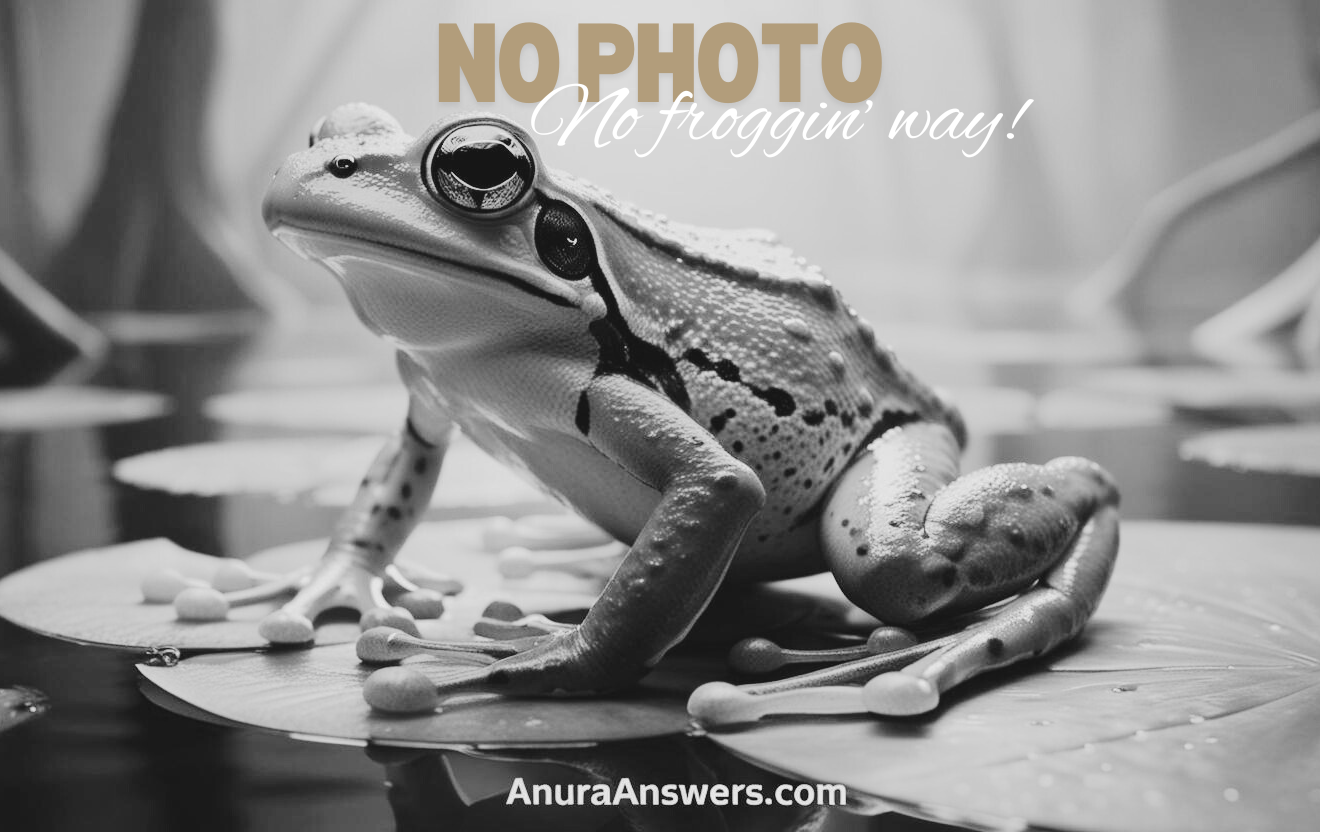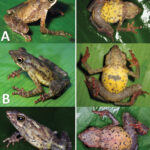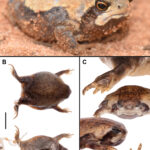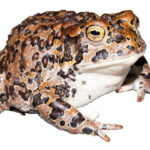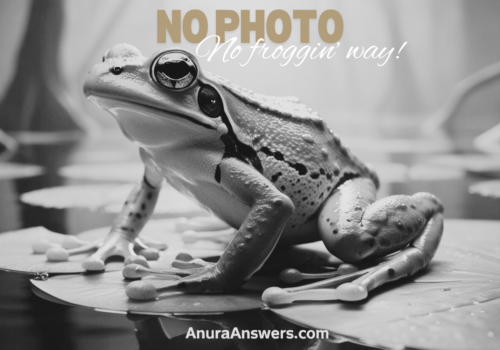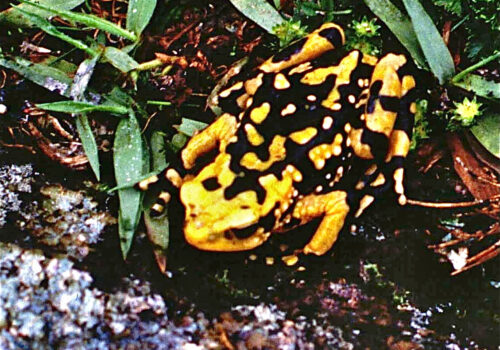- Atelopus pictiventris: The Vibrant Harlequin Frog Dancing on the Edge of Survival
- Taxonomy and Classification of Atelopus pictiventris
- Natural Habitat: The Emerald Realms of Colombia's Cloud Forests
- Physical Characteristics: Nature’s Masterpiece in Miniature
- Behavior and Life Cycle: An Intricate Dance of Survival
- Ecological Role: Significance Beyond Their Size
- Threats and Conservation Status: A Jewel Losing its Luster?
- Cultural and Scientific Significance: Beyond Biological Importance
- Conclusion: A Call to Action from Rainforest Jewels
Atelopus pictiventris: The Vibrant Harlequin Frog Dancing on the Edge of Survival#
In the mist-covered slopes and lush cloud forests of Colombia, a diminutive yet mesmerizing creature captivates every observer lucky enough to behold its beauty. Atelopus pictiventris, colloquially known as the Painted-belly Harlequin Frog, is an enchanting amphibian whose tale intertwines vivid beauty, critical ecological roles, and an ongoing conservation saga. Adorned with striking colors and demonstrating intriguing behaviors, this tiny frog tells a profound story— one that reveals both the wonders and challenges of life in delicate ecosystems, highlighting why every small species matters.
Belonging to a genus renowned for its spectacular diversity and equally tragic decline, the Painted-belly Harlequin Frog earns admiration not only for its visual splendor but also as an invaluable indicator species for environmental health. Tragically, despite being so vibrant, this small amphibian faces significant existential threats, its delicate presence reminding us of the urgent need to protect our planet’s rich biodiversity.
Taxonomy and Classification of Atelopus pictiventris#
Atelopus pictiventris belongs to the Bufonidae family—a collection of true toads and their close relatives—but unlike many of its cousins, this species does not bear the recognizable rounded body and rough skin usually associated with common true toads. Instead, it embodies a sleeker, more agile build, typical of harlequin frogs. The genus Atelopus itself harbors an extraordinary diversity, comprising over 100 species widely famous for their brilliant coloration and patterns, further strengthening their nickname as “jewels of the rainforests.”
This species was formally described by José Vicente Rueda-Almonacid and Fernando Castro in 1992. Its Latin binomial, beautifully descriptive, “pictiventris,” literally translates to “painted belly,” a nod to the frog’s remarkable ventral coloration distinctive in vivid yellows, reds, oranges, and sometimes white or black patches. Their striking pigmentation functions both as a dazzling spectacle and as a vital evolutionary adaptation, warning potential predators of their skin toxins—an iconic example of aposematic coloration in nature.
Natural Habitat: The Emerald Realms of Colombia’s Cloud Forests#
Journey with me now to the high-altitude forests and richly humid habitats of Colombia’s Andean slopes—a realm where clouds embrace the mountainsides daily, creating a perpetual mistiness that nurtures dense vegetation bursting in hues of emerald and jade.
The home of Atelopus pictiventris is as vivid and complex as the species itself. Found primarily within the regions of Antioquia and Caldas, these frogs flourish near fast-flowing montane streams and moist forest floors scattered with leaf litter, moss, and ferns. Preferring elevations between 1000 to 2500 meters above sea level, their habitats experience consistent moisture, moderately cool temperatures, and a delicate ecological balance essential to the frogs’ survival.
This highly specialized environment provides not only exceptional camouflage and protection but also abundant prey and ideal conditions for reproduction and larval development. The delicate amphibians depend heavily on these microhabitats; even small environmental changes can profoundly affect their survival, rendering them vulnerable to potential extinction.
Physical Characteristics: Nature’s Masterpiece in Miniature#
At first glance, Atelopus pictiventris captivates with its vivid contrast of colors and elegantly subtle form. Adult frogs rarely exceed 3 centimeters—comparable to the length of an average human thumb—yet despite their small stature, they are striking visual gems in Colombia’s biological treasury.
Their dorsal surface can vary greatly, ranging from dark brownish-black to vibrant greens and yellows, each marked by intricate patterns of contrasting spots or bands. However, their bright bellies, displaying a stunning mosaic of reds, yellows, and oranges across varying patterns, serve as their identifying hallmark. This brilliant underside coloration makes them easy to identify, and simultaneously warns potential predators of their toxicity, a defense crafted by nature over countless generations.
Unlike the stereotypical robust “toad,” the physique of harlequin frogs is elongated and agile, their limbs and digits specially suited for gripping slippery rocks along flowing streams. Their smooth skin harbors potent toxins, providing chemical protection against predators and microbial threats. These amphibians exemplify the marvels of evolutionary adaptation, every physical attribute contributing intricately to their style of living in perilous habitats.
Behavior and Life Cycle: An Intricate Dance of Survival#
Life Around Water: Feeding Habits and Daily Routines#
By day, Atelopus pictiventris shows particular fondness to bask on mossy rocks or streamside vegetation, absorbing moisture and occasionally lunging after small invertebrates that venture too close. Their primary prey consists of ants, beetles, spiders, and small flying insects. Demonstrating finely tuned predatory behavior allows them, despite their leisurely demeanor, speedy and precise hunting bursts when capturing sufficiently tempting prey.
Interestingly, these frogs exhibit territorial behaviours—particularly males, who engage in gentle yet persistent wrestling matches when competition for prime streamside territories arises. Communication is multifaceted; males vocalize softly, emitting short rhythmic calls to attract females or establish dominance, blending curiously in chorus with the whisper of nearby streams.
Reproduction and the Delicate Journey of Tadpole Development#
Breeding in these frogs aligns closely with rainy seasons. As clouds thicken and rains nurture the rivers and streams, males gather near prime breeding locations, displaying bright limbs and calling persistently. Upon successful courtship, females lay strings of jelly-encased eggs beneath stones or in sheltered, moisture-rich crevices, guarded briefly by vigilant males.
Once hatched, tadpoles find themselves swept gently into stream channels, beginning their precarious life in water — a stage fraught with predators and stressors. Equipped with strong suction mouthparts, these little tadpoles cling tightly to rocks, safely secured against powerful currents. Over several weeks, they undertake metamorphosis, slowly transforming into miniature adults, gradually emerging from waters to settle into terrestrial roles crucial to the ecosystems they inhabit.
Ecological Role: Significance Beyond Their Size#
Despite their diminutive stature, Atelopus frogs such as A. pictiventris play integral roles as both predator and prey. Controlling populations of insects and other invertebrates, they maintain delicate ecological balances essential for the broader health of their habitats.
Equally crucial, these frogs act as indicators for ecosystem health. Their permeable skins and susceptibility to environmental toxins mean that noticeable declines or diseases within populations often reflect widespread ecological disruptions. Thus, they provide early warnings of environmental degradation, highlighting areas in critical need of conservation intervention.
Threats and Conservation Status: A Jewel Losing its Luster?#
Sadly, the striking elegance of Atelopus pictiventris has not spared it from profound ecological threats. Tragically, habitat destruction from agriculture, logging, and human development consumes their specialized dwellings, fragmenting crucial habitats needed for population stability. Climate change, increasing temperatures, changing precipitation patterns, and resultant stream disturbances exacerbate the species’ plight.
Perhaps the gravest threat remains the chytrid fungus (Batrachochytrium dendrobatidis), the insidious pathogen devastating amphibians worldwide. Several Atelopus species have already suffered severe declines and even extinction due to this fungal epidemic. Consequently, the International Union for Conservation of Nature (IUCN) lists this species as Critically Endangered, an official status accentuating urgency for conservation action.
Current efforts—including captive breeding, disease research, habitat protection, and awareness raising—offer hope, yet require sustained support from the broader public and international conservation communities.
Cultural and Scientific Significance: Beyond Biological Importance#
Atelopus pictiventris, like other harlequin frogs, has inspired indigenous lore and cultural narratives amongst local communities, symbolic of natural purity, rainforest spirits, or environmental indicators. Scientifically, the toxins harbored in their small bodies provide researchers potential biomedical insights, underscoring their intrinsic value far beyond mere aesthetics.
Conclusion: A Call to Action from Rainforest Jewels#
The vibrant life of Atelopus pictiventris stands as both inspiration and cautionary tale. Each breathtaking glimpse affirms the abundant intricacies nature has woven across millennia. Yet, every threat to this charismatic frog cautions us about broader environmental dangers.
Together, we have an opportunity—even moral responsibility—to act. By supporting conservation initiatives, advocating for sustainable practices, and remaining informed stewards of our planet, we honor the legacy of these small yet magnificent creatures, preserving forever the dazzling dance of the Painted-belly Harlequin Frog.
